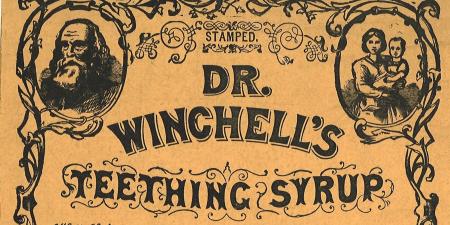Abstract
Parents of children with complex health needs are often both vigilant and very knowledgeable about their child’s disease state. That said, sometimes parents’ hyperfocus, combined with their strong emotional attachment, can result in both false beliefs regarding their child’s capacities and disagreements with clinicians about what is and is not clinically indicated. We examine ethical and professional responsibilities clinicians should consider when working with parents who hold false beliefs about their child with complex health needs.
Case
Joan K is a 10-year-old with Lennox-Gastaut syndrome, which entails recurrent seizures, severe cognitive and developmental deficits, and often progressive difficulties with swallowing.1 Joan’s mother, Ms K, is a single parent and has always been her daughter’s primary caregiver. Despite Joan’s developmental and motor deficits, she has been able to eat and maintain normal height and weight—which her mother believes is due to herbal supplements she includes in Joan’s diet. For the third time in 6 months, however, Joan has been diagnosed with pneumonia and is now hospitalized for respiratory distress. It is apparent to the clinical team that Ms K, a licensed nurse practitioner, is devoted to meeting her daughter’s needs, but also that Ms K has a view of her daughter that is at odds with Joan’s actual abilities. The disconnect comes to a head when a nurse comes to Joan’s bedside to administer intravenous antiseizure medication.
Ms K objects, stating, “No, Joan takes this as a paste. I crush the pills, mix them with water, and spoon feed her.”
When the nurse responds, “I can’t do that if she’s having difficulty swallowing,” Ms K states matter-of-factly that Joan leads a normal life and has no trouble swallowing. “I have been doing this for years, and there’s no reason to change now.”
The young attending physician, Dr D, overhears this exchange and intervenes. “Ms K, as I think you know, difficulty swallowing is a sign of Lennox-Gastaut syndrome progression2 and could be the underlying reason for her recurrent pneumonia. We can do a swallow study to see if that’s the case. But, in the meantime, your daughter needs her medication to control her seizures—particularly since she still has a fever. Given Joan’s respiratory distress and risk for aspiration, the medicine is best given intravenously.” Ms K grudgingly agrees, and over the next few days Joan responds well to the antibiotics. A subsequent swallow study shows significant dyscoordination and aspiration.
When Dr D recommends placing a feeding tube prior to discharge, Ms K responds, “Joan doesn’t need a feeding tube. I’m a nurse, and I can take care of her just fine the way she is.”
Dr D wonders what to say next.
Commentary
Typically, surrogate decision makers’ responsibility is to consider what their loved ones would choose if they had decisional capacity. But for patients who have never had the ability to formulate their own values or express autonomous preferences (which includes young children and persons with severe, life-long neurological impairment), such substituted judgment is not possible. For Joan, this means that her mother (Ms K) has needed to make health care decisions based on what she thought was in Joan’s best interests.3 Because many parents like Ms K devote their lives to caring for and protecting their children, they rightly can be considered experts regarding their child’s condition.4 By respecting this expertise, health professionals can gain parents’ trust and reach a shared understanding with parents of what is best for the child.5
In some cases, however, conflict is unavoidable, particularly when parents’ requests run counter to best practice. On its face, Ms K’s objection to the feeding tube appears to be mostly an “emotionally grounded belief” that is resistant to evidence.6 Ms. K has devoted her life to taking care of Joan and might see her daughter’s ability to eat as not only a means of nourishment but also a measure of success. If so, a change in Joan’s nutritional situation coupled with the team’s recommendation of a feeding tube might trigger both distress and counterproductive reactions for Ms K, as parents who perceive their role as important prefer to be involved in treatment decision making and can be distressed by the need for further intervention.7,8Assuming that the clinical team’s clinical assessment is accurate, Ms K is clinging to a (now) false belief and unrealistic expectation that she can continue to feed her child without risking Joan’s well-being.
Faced with this kind of situation, clinicians should exercise caution to avoid straining their relationship with the parent, which is needed (long term) to promote effective care. Here we will discuss how clinicians can support a parent while ensuring that the child with complex needs is protected from harm. We will highlight how to address false beliefs, engage in shared decision making, take a multidisciplinary approach to communication, and deal with the ethical challenges of conflicts engendered by false beliefs.
How Should Clinicians Address a False Belief?
When faced with a clinical situation like this, the team must practice both the art and the science of medicine. This requires exercising compassion, sound medical reasoning, and strong interpersonal and partnering skills. Developing effective partnerships with surrogate decision makers usually involves shared decision making, which allows surrogate decision makers’ values and preferences to be considered without displacing the patient from being the focus of care.9 Because parents of a child who has never had the ability to express preferences typically know their child best and have decision-making authority, it makes sense to rely on them to achieve patient-centered care, whereby care is individualized in light of the patient’s unique situation. But parents’ decision-making authority is predicated on their acting in the best interests of the child, particularly for major health decisions.10 Accordingly, to engage in shared decision making, Joan’s clinical team has a complex set of responsibilities: (1) to truly understand and appreciate Ms K’s perspective; (2) to engage Ms K respectfully while assessing her and Joan’s specific needs and preferences; (3) to share the information needed to make patient-centered decisions, clearly explaining what is known, what is uncertain, and what are the risks, benefits, and likely consequences of different plans of treatment; and (4) to share in deliberations with Ms K about which option is best for Joan. Here, we discuss responsibilities 1, 2, and 4.
Understand Ms K’s perspective. To begin, the team should recognize that Ms K could be struggling to reconcile the objective health data with her desire to maintain established behavior patterns in Joan’s life. Additionally, Ms K’s training as a nurse might lead to some role confusion, insofar as it blurs the line between “caring for” Joan and “treating” Joan. It is precisely because personal feelings can influence one’s professional judgment that clinicians are strongly advised against treating family members.11 As such, the team should affirm Ms K’s expertise and role as Joan’s advocate but also help Ms K appreciate that her emotional attachment to Joan could be compromising her objectivity.
Engage Ms K respectfully. Clinicians are under no obligation to provide futile treatment, even when demanded.12 But, for Joan, the question is whether treatment—the feeding tube—can be imposed over and against her mother’s objection. The team’s responsibilities to treat Joan originated with the patient-physician relationship that was established when Ms K brought Joan to the hospital for care. It being determined that Joan’s swallowing dysfunction puts her at high risk for multiple complications if oral feeding is continued,13,14 the question arises whether there is a reasonable alternative to placing a feeding tube. If not, the team has a professional and ethical responsibility to ensure that Joan receives appropriate care in the form of a feeding tube.
For most parents, feeding their child is a profoundly meaningful activity. Acknowledging this value and how emotionally fraught it can be for some parents to consent to a feeding tube can be helpful. Doing so might validate Ms K’s reluctance to give consent without discounting the clear need to protect Joan. By pointing to the natural course of Lennox-Gastaut syndrome,2 the team can further commend Ms K for her years of hard work and her ability to continue to feed Joan until now.
If Ms K holds firm to her (arguably) false belief about the safety of continued oral feeding, it would be important to explore the origins of this belief. Is it rooted in fear? Misunderstanding? Guilt? Magical thinking? Does Ms K need to have the health data presented in a different way?
Engage in shared decision making. Because people sometimes process information quite differently, the team might need to reconsider how best to explain Joan’s worsening condition. It is easy to mistakenly assume that a parent interprets clinical information in the same way as clinical team members, especially when the parent is a fellow health professional. It can be particularly helpful to absolve Ms K of any self-imposed culpability by reminding her that Joan’s current condition reflects the disease process, not any failing on her part. The central message should embody a reasoned, evidence-based assessment of Joan’s present condition, combined with an empathic recommendation for treatment and a clear explanation of the potential consequences of declining a feeding tube.
Shared decision making involves engaging Ms K not only to assess her understanding but also to convey respect and build trust. Many intractable conflicts can be traced to breakdowns in communication and trust, which lead to mistaken assumptions, suspicion, and often vilification on either side. Without trust, the entire clinical enterprise breaks down, as clinicians can no longer rely on the information provided by patients and families, who in turn dismiss clinicians’ recommendations for treatment. With this in mind, social workers and case managers often can play an important role in helping everyone involved work as a team to promote Joan’s well-being.
How Should Clinicians Respond if Parents’ Refusal of Recommended Treatment Endangers a Child?
Although respectful, empathic engagement will resolve most conflicts, there are instances in which disagreement persists. In these situations, the issue is whether the potential harm to the child is sufficient to warrant overriding the parents’ decision.15 Parents are not required, or even expected, to make decisions that prioritize a child’s interests over and against all other interests. Parents’ decisions invariably take into account the interests of a child’s siblings, those of their community, and even their own interests. Ethical, social, and legal norms, however, demand that children be protected from significant, undue harm; protections for children in the United States include the mandate to report abuse or neglect.16,17
In the present case, if Ms K persistently refuses a feeding tube for Joan, the team must decide whether the risk and severity of harm are great enough to constitute medical neglect. When to report possible child abuse or neglect is a complex question.18 If a clinician has “reasonable suspicion” that a child is being abused or neglected, there is an ethical and legal obligation to make a report to child protective services.19 While there is no specific definition for what counts as “reasonable suspicion,” a good rule of thumb is that physicians should report whenever they either believe or have the nagging feeling that abuse might have has happened or is likely to happen.20 It would count as neglect if a parent’s failure to adhere to prescribed care causes (or creates significant risk for) serious harm to the child.21 Accordingly, Ms K needs to understand that her continued refusal of a feeding tube would constitute neglect because it puts Joan at risk for repeated aspiration and life-threatening respiratory compromise.13,14 That said, invoking “neglect” has the potential to undermine the team’s relationship with Ms K. Hence, careful consideration is needed about how to frame the concern about neglect and when to introduce it. Because case managers and social workers are often very skilled at handling emotionally charged situations and nuanced relationships, they can be very helpful in resolving disputes involving refusal of recommended treatment. Although it can be helpful to consult with child abuse specialists or social workers experienced in such cases, ultimately the clinician with the concern is responsible for the decision to report.
If, despite the team’s best efforts, Joan’s mother continues to refuse placement of a feeding tube, medical neglect would need to be reported to child protective services.22 Ideally, such a report would not only ensure Joan’s safety but also initiate social services that would help Ms K provide care to Joan.
In acting to ensure Joan’s well-being, the team should also do its best to address Ms K’s own needs and concerns. Relationships between parents and health professionals are often strained by the need to report neglect. That said, these relationships are more likely to be preserved when clinicians are transparent about their actions and motivations and respond empathically to parents’ reactions, which often include anger, sadness, and frustration. Compassion and reinforcement of shared goals concerning Joan’s well-being might help Ms K better appreciate both the reality of Joan’s condition and the team’s need to act. It also might be helpful to acknowledge that we all lose perspective at times, be it from exhaustion or the intense focus required to care for children with complex medical needs—and that even the most competent, knowledgeable, and caring people need outside, expert direction at times.
Strategies for Engaging Parents About False Beliefs
Parents of children with complex medical needs are typically knowledgeable and well positioned to help guide care for their child. Various circumstances can compromise their ability to make sound health decisions for their child, however, including holding a fixed false belief. When a false belief leads to disagreements about necessary treatment, the team needs to respectfully engage the parent in discussion, provide education and support to help the parent make sound decisions, focus discussion on everyone’s shared interests in the child’s well-being, and, when necessary, exercise its authority to protect vulnerable children from harm.
References
- Gallop K, Wild D, Verdian L, et al. Lennox-Gastaut syndrome (LGS): development of conceptual models of health-related quality of life (HRQL) for caregivers and children. Seizure. 2010;19(1):23-30.
- Ogawa K, Kanemoto K, Ishii Y, et al. Long-term follow-up study of Lennox-Gastaut syndrome in patients with severe motor and intellectual disabilities: with special reference to the problem of dysphagia. Seizure. 2001;10(3):197-202.
-
Macklin R. Return to the best interests of the child. In: Gaylin W, Macklin R, eds. Who Speaks for the Child: The Problems of Proxy Consent. New York, NY: Plenum Press; 1982:265-301.
-
Woodgate RL, Edwards M, Ripat JD, Borton B, Rempel G. Intense parenting: a qualitative study detailing the experiences of parenting children with complex care needs. BMC Pediatr. 2015;15(1):197. doi:10.1186/s12887-015-0514-5.
-
McCann D. Parenting children with complex needs [published online ahead of print December 30, 2015]. J Child Health Care. doi:10.1177/1367493515624008.
- Halpern J. When concretized emotion-belief complexes derail decision-making capacity. Bioethics. 2012;26(2):108-116.
- Pyke-Grimm KA, Stewart JL, Kelly KP, Degner LF. Parents of children with cancer: factors influencing their treatment decision making roles. J Pediatr Nurs. 2006;21(5):350-361.
- Miller VA, Luce MF, Nelson RM. Relationship of external influence to parental distress in decision making regarding children with a life-threatening illness. J Pediatr Psychol. 2011;36(10):1102-1112.
- Kon AA, Davidson JE, Morrison W, Danis M, White DB. Shared decision making in intensive care units: an American College of Critical Care Medicine and American Thoracic Society policy statement. Crit Care Med. 2016;44(1):188-201.
-
Baumrucker SJ, Sheldon JE, Stolick M, Morris GM, Vandekieft G, Harrington D. The ethical concept of “best interest.” Am J Hosp Palliat Care. 2008;25(1):56-62.
-
American Medical Association. Opinion 1.2.1 Treating self or family. Code of Medical Ethics. https://www.ama-assn.org/delivering-care/treating-self-or-family. Accessed April 18, 2018.
- Misak CJ, White DB, Truog RD. Medically inappropriate or futile treatment: deliberation and justification. J Med Philos. 2016;41(1):90-114.
- Kim JS, Han ZA, Song DH, Oh HM, Chung ME. Characteristics of dysphagia in children with cerebral palsy, related to gross motor function. Am J Phys Med Rehabil. 2013;92(10):912-919.
- Sullivan PB. Gastrointestinal disorders in children with neurodevelopmental disabilities. Dev Disabil Res Rev. 2008;14(2):128-136.
- Diekema DS. Parental refusals of medical treatment: the harm principle as threshold for state intervention. Theor Med Bioet. 2004;25(4):243-264.
-
Child Welfare Information Gateway; Children's Bureau. Mandatory reporters of child abuse and neglect. https://www.childwelfare.gov/pubPDFs/manda.pdf. Published August 2015. Accessed April 2, 2018.
-
Holder AR. Circumstances warranting court-ordered medical treatment of minors. In: American Jurisprudence Proof of Facts. Vol 24. 2nd ed. Rochester, NY: Lawyers Cooperative Publishing; 1980:169-210.
- Levi BH, Loeben G. Index of suspicion: feeling not believing. Theor Med Bioeth. 2004;25(4):1-34.
- Levi BJ, Portwood SG. Reasonable suspicion of child abuse: finding a common language. J Law Med Ethics. 2011;39(1):62-69.
- Levi BH, Crowell K. Child abuse experts disagree about the threshold for mandated reporting. Clin Pediatr (Phila). 2011;50(4):321-329.
-
Keeshin BR, Dubowitz H. Childhood neglect: the role of the paediatrician. Paediatr Child Health. 2013;18(8):e39-e43. doi:10.1093/pch/18.8.e39.
-
Jenny C; Committee on Child Abuse and Neglect, American Academy of Pediatrics. Recognizing and responding to medical neglect. Pediatrics. 2007;120(6):1385-1389.



